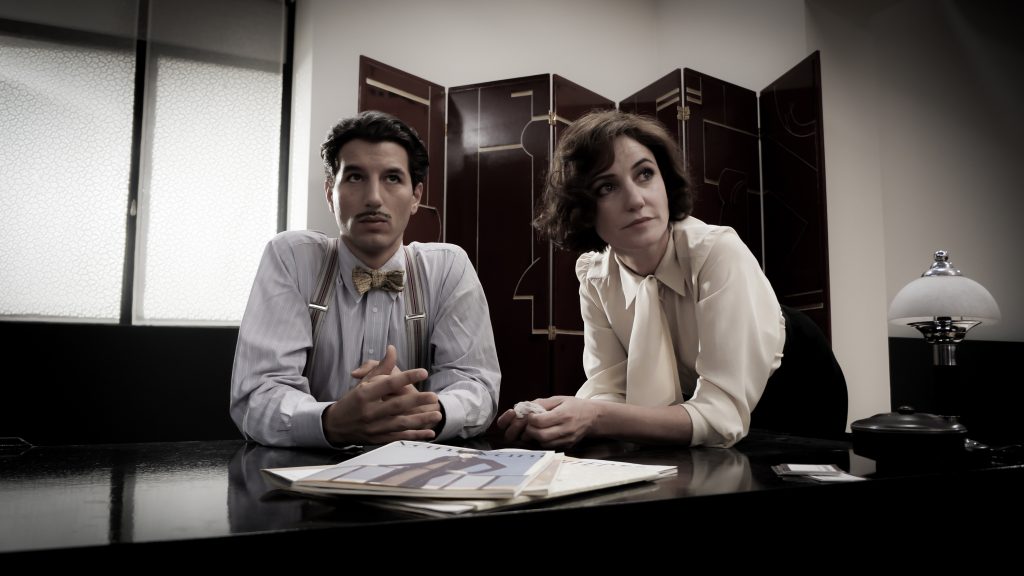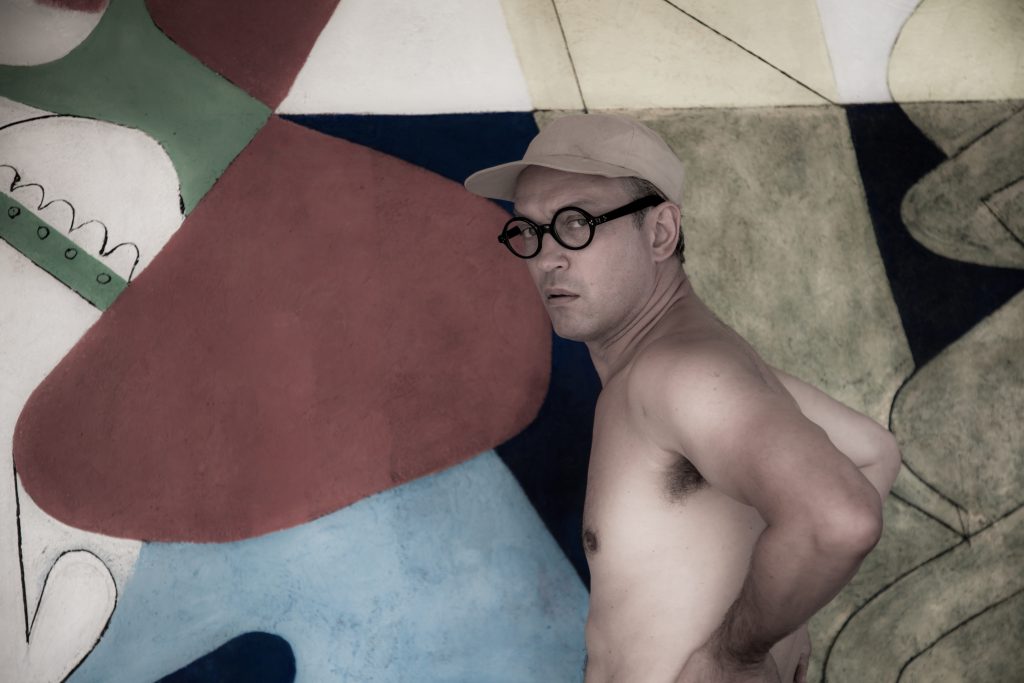July 16, 2020
by Carla Hay

Directed by Mary McGuckian
English and Somalian with subtitles
Culture Representation: Taking place in Somalia and Ireland, the drama “A Girl From Mogadishu” (based on a true story) has a racially diverse cast (white and black) representing Somalian natives and refugees and Irish politicians and social workers.
Culture Clash: Ifrah Ahmed escapes war-torn Somalia for a life in Ireland, where she becomes a social activist campaigning to outlaw female genital mutilation.
Culture Audience: “A Girl From Mogadishu” will appeal primarily to people who like stories about social justice issues and immigrants who overcome difficult challenges.

The dramatic film “A Girl From Mogadishu” (written and directed by Mary McGuckian) takes on two very difficult subjects—war-torn Somalia and the barbaric practice of female genital mutilation (FGM)—and tells the story from the perspective of someone who’s experienced both in real life. The movie is a biography of Ifrah Ahmed, who fled Somalia when she was 15. She ended up in Ireland, and became a leading activist in a campaign to outlaw FGM, which has been a forced ritual (mostly inflicted on underage girls) in African cultures for centuries.
Aja Naomi King (who is American) gives a compelling performance as Ifrah, from the ages of 15 to her 20s. The entire movie has her voiceover narration, which works well in some scenes, but doesn’t work in others. The movie begins on December 28, 2006, with Ifrah running for her life on the day that’s known as the Fall of Mogadishu, when the militaries of Somalia’s Transitional Federal Government and Ethiopian troops invaded the Somali capital.
Ifrah becomes separated from her family (her grandmother, her father and her brother) after the military raided the family home. She ends up in an empty house, where three military soldiers rape her. Ifrah has an aunt who lives in Minnesota, so Ifrah thinks her best chance for a life outside of Somalia is to go to the United States to live with her aunt.
Ifrah boards a bus to Addis Ababa, Ethiopia. From there, she plans to go to the United States. But she has a close call in Addis Ababa when she finds out that she boarded the wrong bus, which is controlled by a sex trafficker.
She runs away from the wrong bus and boards another bus, which leads her to a family with a son named Hassan (played by Barkhad Abdi), who tells Ifrah that he can take her to the United States. The movie doesn’t make it clear how Ifrah was able to pay for this service, since it’s obvious that Hassan isn’t going to all this trouble out of the goodness of his own heart. This missing detail is an example of one of the flaws in this movie’s screenplay.
Hassan provides Ifrah with a passport and specific instructions to follow him and imitate what he does when they’re at the airport. It’s the first time that Ifrah ever gets on an escalator and goes on an airplane, so she’s understandably terrified. But when Ifrah and Hassan leave Ethiopia, they don’t arrive in the United States. They arrive in Ireland’s capital city of Dublin instead.
Ifrah is angry and confused over why Hassan lied to her, but he explains that Ifrah cannot stay with her aunt in Minnesota because her aunt is not a legal immigrant in the United States. Hassan tells Ifrah that she can seek asylum in Ireland. And then he drops her off in the cold winter night at a Dublin Asylum Seekers’ Center with nothing more than a note written in English with her name and why she needs asylum.
Because she is an unaccompanied minor seeking asylum, Ifrah is put into a group home called Ashton House and is placed under the care of social workers. She experiences major culture shock, not only because she can’t speak English but also because she has difficulty adjusting to the type of food that’s eaten in Ireland. In one scene, when a male social worker laughs at how Ifrah eats a bowl of cornflakes with her bare hands, she gets irritated and throws a shoe at him.
Ifrah is reprimanded, but she is able to communicate with the social worker that what she’s really frustrated about is not being able to speak English. With the help of a Somalian translator at Ashton House, Ifrah is able to better communicate with the staff. Ifrah has also become friends with another Somalian refugee at Ashton House. Her new friend is Amala (played by Martha Canga Antonio), and they both help each other learn English.
Ifrah’s life takes an unexpected and dramatic turn when she has her first medical exam in Ireland. The doctors are shocked to find out about her FGM. At first, Ifrah mistakenly thinks that their horrified reaction is because they think she’s HIV-positive. The doctors tell her she’s not HIV-positive and that they’re upset by the mutilation of her genital area. Ifrah replies, “This is my culture.”
However, when Ifrah figures out that FGM is not normal and is a major stigma in cultures outside of Africa, she’s overwhelmed by shame and starts sobbing uncontrollably. The next thing you know, there’s a flash forward to Ifrah as an anti-FGM activist giving a speech to a group of politicians. This sudden flash-forward scene is a little jarring and an example of better editing choices that director McGuckian could have made, since the movie keeps jumping back and forth in time in a way that doesn’t always transition smoothly.
The rest of the movie shows Ifrah’s anti-FGM activism and the increased progress and media attention that she and her allies received for this issue. With the help of Ireland’s Labour Party politicians Emer Costello (played by Orla Brady) and her husband Joe Costello (played by Stanley Townsend), Ifrah was able to get FGM outlawed in Ireland. And, accompanied by a NGO (non-governmental organization) rep (played by Luke Spencer Roberts), Ifrah travels to Africa to further her cause to get FGM banned.
The movie also depicts how Ifrah eventually opened up and went public with all the harrowing details of what happened to her during her FGM torture. She was mutilated at 8 years old with several other girls, and they were tied up for 40 days with a very limited ability to urinate. One of the girls got a urinary tract infection and died.
There’s a scene where Ifrah goes back to Somalia to confront her grandmother for allowing the FGM to happen to Ifrah. Hassan pops up out of nowhere and tells Ifrah, “Good girls keep things private and don’t talk.” Ifrah replies defiantly, “I will not be silenced! Not now, not ever, not even for my family!”
“A Girl From Mogadishu” has an important story to tell, but there are some flaws in how it’s told. The dialogue and narration are often simplistic and predictable. And the movie needed better editing, so that the story didn’t seem so choppy and jumbled during the flashback and flash-forward scenes. However, the acting, especially from King in the lead role, elevates the often-trite screenplay. Her performance is worth watching, even if she has to say a lot of lines that could have been written better.
The production design (by Emma Pucci) and costume design (by Nathalie Leborgne) complement the movie very well. For example, the film does a convincing recreation of Barack Obama’s 2011 visit to Ireland, with Ifrah among the thousands of people who went to see him give an outdoor speech in Dublin. Ifrah is also involved in doing fashion shows to raise money for her cause. Those fashion shows are depicted quite nicely in the film.
There are many scenes in “A Girl From Mogadishu” that look like a made-for-TV movie instead of a truly cinematic experience. Despite its flaws, “A Girl From Mogadishu” has emotional authenticity and respect for the traumatic subject matter (the real Ifrah Ahmed was a consultant for the movie), considering that FGM is rarely acknowledged in narrative feature films. This movie will help make people more aware that trying to stop FGM is not just a “women’s issue.” It’s also about human rights.
Showtime Women premiered “A Girl From Mogadishu” on July 15, 2020, and the movie is available on Showtime’s on-demand platforms. Pembridge Pictures will release the film internationally from November 25, 2020 to December 10, 2020.


